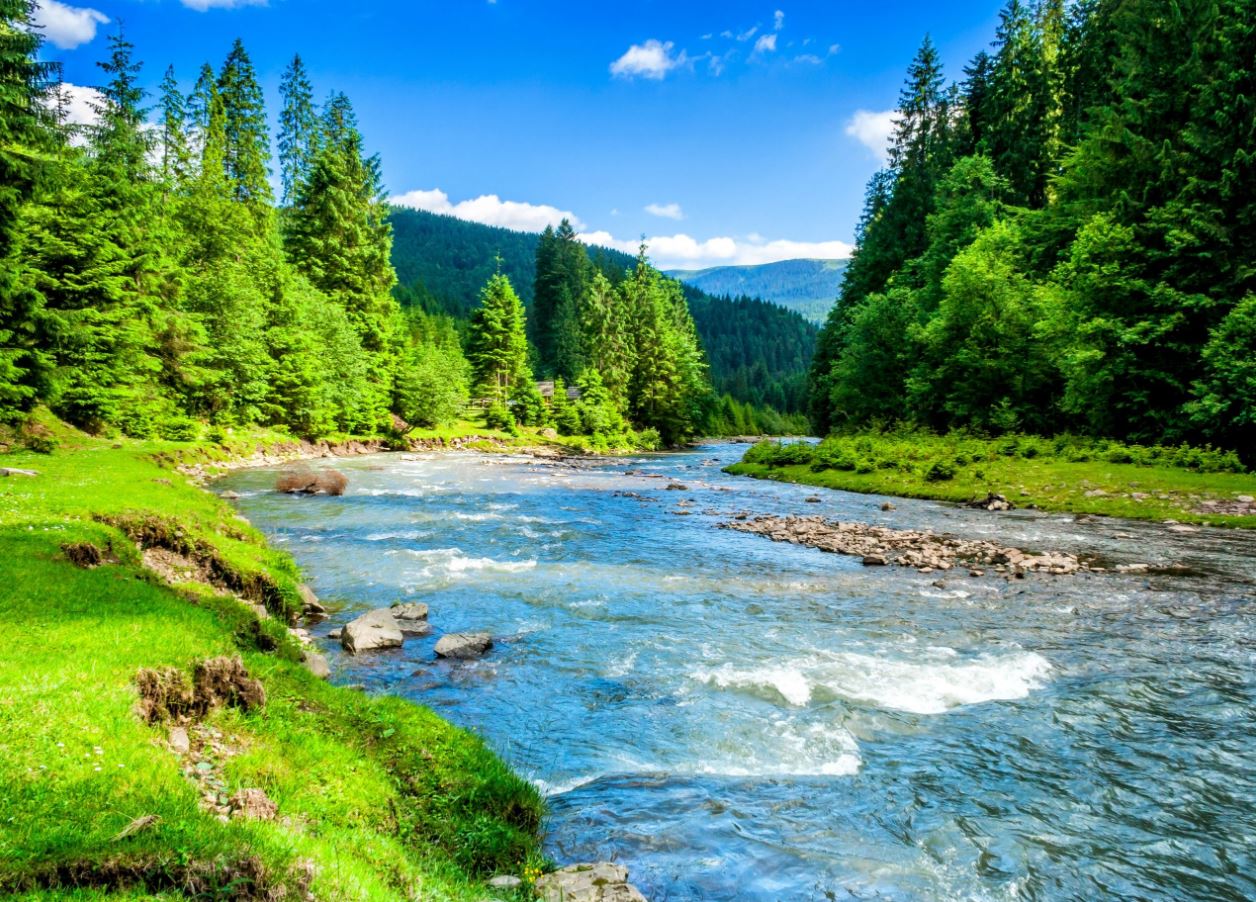Freshwater environments, including rivers, lakes, and wetlands, play a vital role in sustaining life on our planet. These habitats serve as a sanctuary for numerous species of animals and plants, while also serving as a crucial source of water and sustenance for us. Here, you will find enlightening details about freshwater biomes, as well as valuable insights into the primary habitats that exist within them.
What Is The Freshwater Biome?
The freshwater biome encompasses a diverse gathering of flora and fauna that inhabit various freshwater environments worldwide.
These environments consist of streams, rivers, lakes, ponds, swamps, marshes, and bogs, and they play a crucial role in supporting life on our planet. Beyond serving as a source of drinking water, freshwater habitats serve as a sanctuary for numerous plants and animals, offering them a place to thrive and call home.
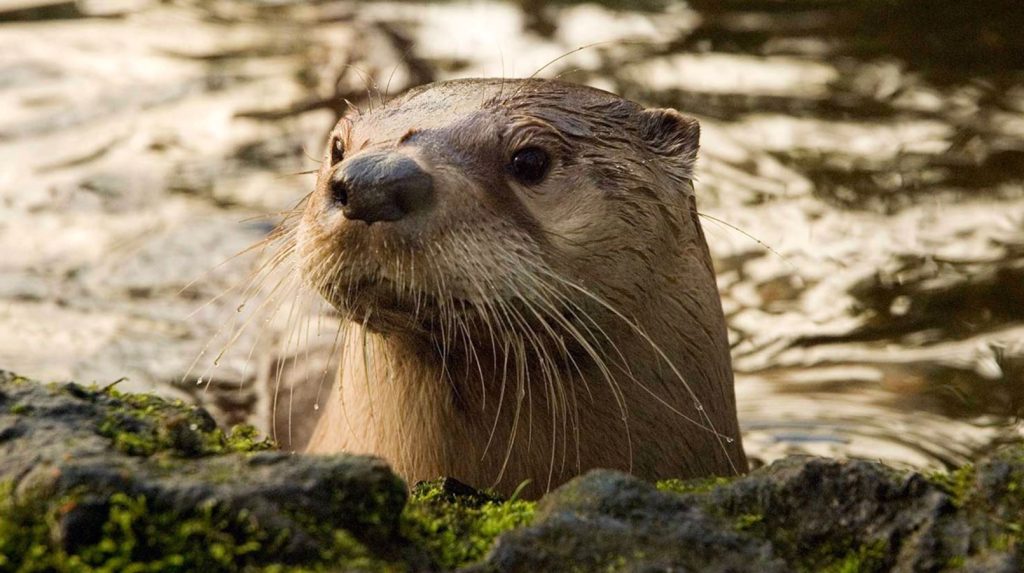
Freshwater habitats are found across every continent except Antarctica, yet they occupy less than 1% of the Earth’s surface. Surprisingly, these small areas are home to an astonishing 10% of all known animal species, with an impressive 40% of fish species residing within them.
Within these precious freshwater ecosystems, more than 100,000 diverse species of plants and animals thrive.
While freshwater constitutes merely 3% of the Earth’s total water, a significant portion, about two-thirds of it, remains locked in icy glaciers or is otherwise inaccessible. In reality, a mere 0.014% of the planet’s water exists as freshwater, encompassing rivers, lakes, and swamps. (Source: USGS)
Freshwater Biome Biodiversity
The freshwater realm is teeming with life and remarkable biodiversity. Within this aquatic habitat, various creatures like worms, mollusks, crayfish, and insect larvae inhabit the muddy depths of lakes and creeks, burrowing and thriving in their own unique ways.
Additionally, the presence of aquatic vegetation creates a welcoming haven for amphibians and aquatic insects. It’s worth noting that almost all amphibians, with only a few rare exceptions, depend on freshwater environments for their survival and well-being.

In the lush surroundings of freshwater environments, various larger creatures such as birds, mammals, and reptiles make their homes. These expanses of freshwater also provide a habitat for fish. Specialized plants thrive in wetlands like swamps and marshes.
Freshwater can be defined as water that contains a relatively low amount of salt or salinity. Typically, freshwater is considered to have a dissolved salt content of less than 0.5 parts per thousand (0.05%). In contrast, seawater has an average salt content of 34.7 parts per thousand (3.47%).
The water in freshwater habitats originates from different sources. It can come from precipitation, including rain, hail, or snow, which is the result of evaporated seawater. It can also come from melted snow and ice from higher elevations.
Freshwater Habitats
Freshwater environments encompass a variety of natural settings where water flows or resides, like meandering rivers and babbling brooks, tranquil lakes and serene ponds, and the lush wetlands of marshes, swamps, and bogs.
Rivers and Streams
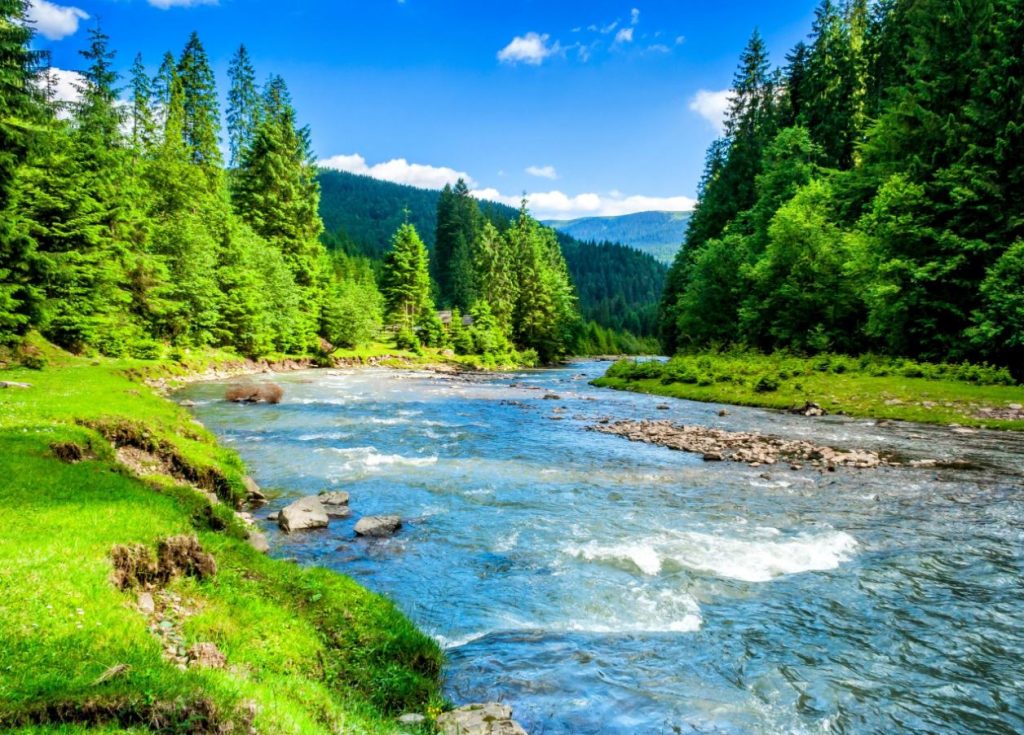
Rivers and streams are well-known habitats within the freshwater biome. They are dynamic bodies of flowing water, classified as lotic ecosystems, in contrast to the still water found in lakes and ponds, known as lentic ecosystems.
These waterways exhibit a diverse range of sizes and shapes, encompassing variations in length, depth, width, flow rate, and water volume. Such characteristics predominantly depend on the geographical features of the surrounding area, such as land shape and the type of rock through which the river meanders.
The formation of rivers and streams can occur either through underground springs, where groundwater emerges to the surface, or by the melting of snow and ice. Initially, the flow starts as small creeks and streams, gradually merging with other watercourses to create larger rivers.
Ultimately, all rivers discharge into the ocean, although their names may change as they merge with other rivers along their course. The River Nile, located in Africa, is widely recognized as the longest river globally, spanning 4,132 miles (6,650 km). However, according to certain measurements, the Amazon River in South America holds the title for the world’s longest river.
On the other end of the spectrum, the Roe River in Montana, USA, holds the distinction of being the shortest river worldwide, with a mere length of 201 feet (61 m).
The majority of water flowing through rivers and streams originates from the surrounding land, having fallen as precipitation. The region from which water drains into a specific river is referred to as its catchment area or watershed.
Nevertheless, not all rainwater finds its way into rivers and streams. Some water evaporates, while a portion seeps into the ground, replenishing underground water reservoirs known as aquifers.
Over time, some of the water stored in these aquifers ultimately becomes part of rivers and streams. When the ground reaches a certain depth below the earth’s surface, it becomes saturated with water, referred to as the water table. As most rivers cut into these saturated riverbanks, the water naturally seeps out of the ground and into the river.
Lakes and Ponds
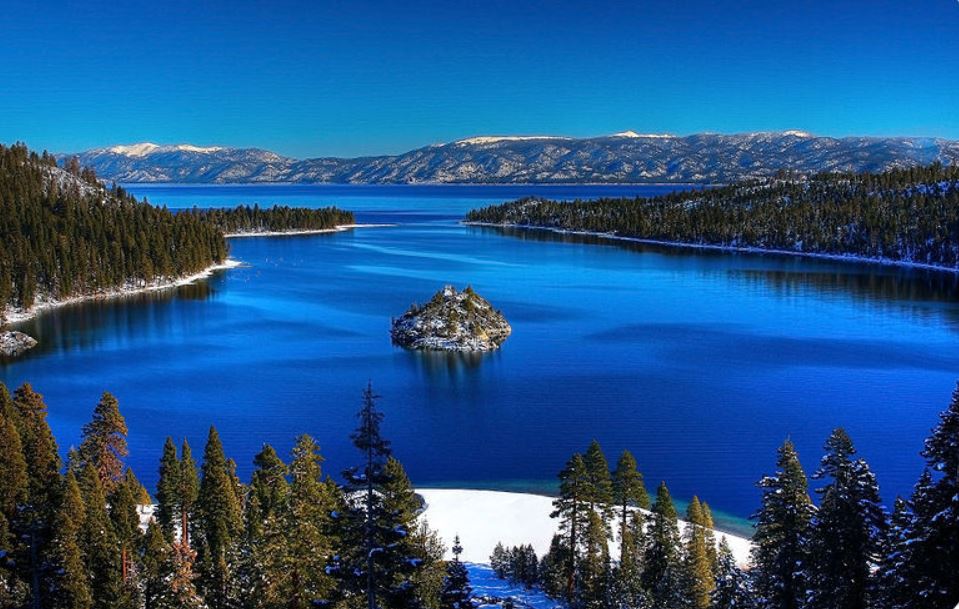
Lakes and ponds are like serene mirrors of water, known as lentic systems. These captivating inland water bodies exist in various parts of the world, varying greatly in size, depth, and altitude. They provide a home to a diverse range of plants and animals.
Many lakes owe their existence to the powerful movements of glaciers during the last ice age, which took place between 12,000 and 1.8 million years ago. As the glaciers moved, they carved out hollows that later filled with water.
Another way lakes are formed is through tectonic activity, the shifting of the Earth’s crust. Tectonic plates in motion can create grooves in the Earth’s surface, which subsequently fill with water.
Nature offers other means of lake formation as well. For instance, certain parts of rivers can become isolated from the main flow, resulting in the formation of lakes. Volcano craters can also fill with water, and the impact of meteorites can create craters that collect water.
Moreover, many lakes and ponds are artificially created by humans for various purposes. These man-made bodies of water serve as reservoirs, sites for fish farming, locations for sport fishing and recreation, or are simply designed for aesthetic appeal. Artificial lakes and ponds often provide habitats for a wide array of wildlife, especially in urban areas where biodiversity tends to be limited.
The world’s largest lake in terms of volume is Lake Baikal, situated in southern Siberia, Russia. It holds a staggering amount of water, approximately 5,521 cubic miles (23,013 cubic kilometers). To put this into perspective, this volume is roughly equivalent to the combined volume of all five of North America’s Great Lakes.
Lake Baikal accounts for roughly 20% of all the freshwater on Earth’s surface. This immense reservoir of freshwater came into existence as a result of tectonic movements.
In North America, Lake Superior claims the title of the largest lake in terms of surface area. It spans approximately 31,700 square miles (82,100 square kilometers).
In temperate regions, lakes can experience thermal stratification, which refers to the formation of distinct temperature layers. During summer, the water near the surface becomes significantly warmer than the deeper water, leading to reduced oxygen levels in the deeper layers.
However, in spring and fall, increased wind turbulence causes constant mixing of the water, reducing the effect of thermal stratification.
In winter, thermal stratification can occur again, particularly in areas with extremely cold temperatures. A layer of cold water forms above a layer of warmer water because water density is highest at 4°C, causing the colder, less dense water to remain on the surface. This phenomenon explains why some lakes become covered with ice during the winter months.
Lakes and ponds can be found at various elevations and latitudes, resulting in different patterns of thermal stratification. In tropical regions, lakes do not exhibit thermal stratification due to minimal seasonal temperature variations. Similarly, ponds are often too shallow to develop thermal stratification.
Wetlands
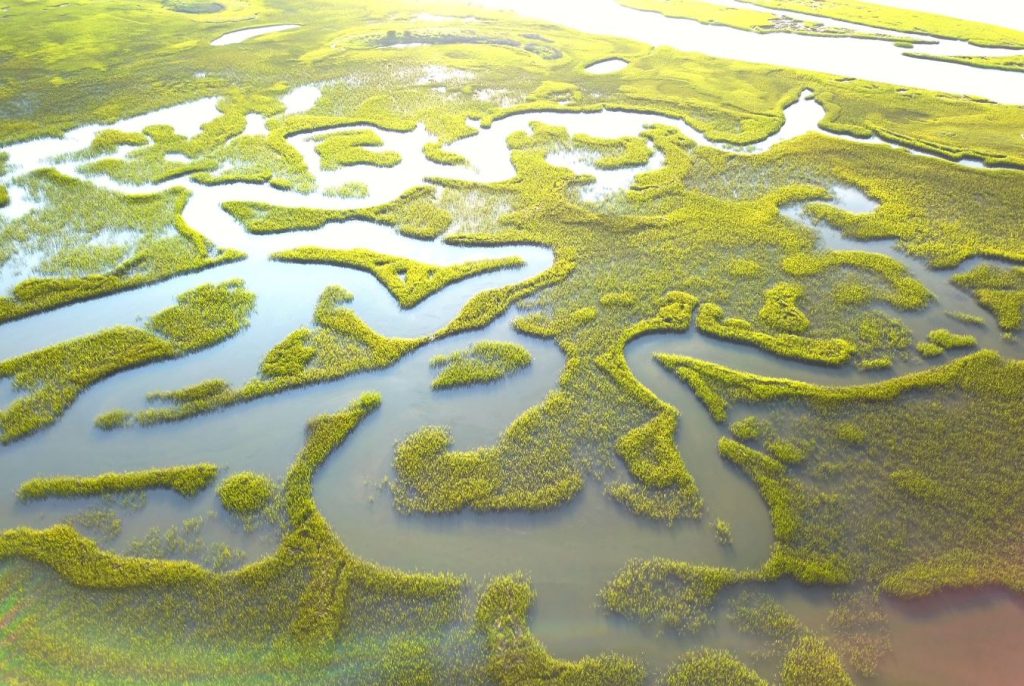
Freshwater wetlands encompass areas submerged in freshwater for the majority or entirety of the year. These wetlands possess waterlogged soil that fosters a distinct array of aquatic plants.
The water sources for wetlands are either floodwaters derived from rivers, lakes, and streams, or groundwater that seeps up through the underlying bedrock.
There exist four primary types of wetlands: marshes, swamps, bogs, and fens.
Marshes thrive with herbaceous plant species specially adapted to fluctuating water levels. These regions are rich in nutrients, teeming with diverse flora and fauna.
Swamps are dominated by woody plants and trees that have evolved to thrive in standing water or perpetually saturated soil.
A considerable number of swamps and marshes have been destroyed by converting their fertile soil into farmland.
Unlike other wetland ecosystems, bogs have limited nutrient content and sustain a relatively smaller amount of life. Sphagnum mosses and heathers prevail as the predominant plants in bogs. The ground in bogs comprises peat, the accumulation of countless years’ worth of sphagnum moss growth. The water in bogs is generally supplied by precipitation and tends to be acidic.
Fens are waterlogged regions commonly found in low-lying areas. They receive water from both underground and surface sources. Unlike bogs, the water in fens tends to be either neutral or alkaline.
Certain wetlands in the northern hemisphere are created by beavers. Through the construction of their characteristic dams, beavers generate a wetland habitat that offers them a secure environment for foraging.
Importance of Freshwater Habitats
Freshwater holds immense significance, not only for humanity, but also for the survival of countless animals and plants dependent on these ecosystems.
Although freshwater habitats cover less than 1% of the Earth’s surface, they serve as a haven for an astonishing array of life. They are home to 10% of all known animals, over 25% of vertebrate species, 40% of fish species, and a diverse range of invertebrates and plants, totaling more than 100,000 species.
Beyond their biodiversity, freshwater habitats play a vital role in sustaining our everyday needs. They provide the majority of the water we rely on for drinking, bathing, washing, and irrigation. Additionally, we rely on numerous freshwater plants and animals as a source of sustenance.
The freshwater biome serves as a crucial resource for energy production, transportation, erosion prevention, flood control, and waste management.
Regrettably, many of the world’s wetlands are facing depletion and irreversible damage. Water bodies are becoming polluted, and vast expanses of wetlands are being destroyed to make way for agriculture.
Out of the 177 longest rivers worldwide, fewer than 70 remain untouched by human-made barriers like dams.
Over the past 50 years, the frequency of severe flooding and drought has escalated, partly due to the degradation of freshwater habitats.
